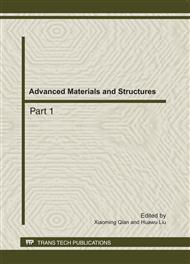p.1465
p.1469
p.1473
p.1477
p.1481
p.1485
p.1489
p.1493
p.1499
Research on Controllable Effects of HI Ultrasonic Radiation to Active Composition in Hippophae
Abstract:
The controllable cavitation effects of high intensity ultrasound are introduced. The effects are used for active component extraction of biomaterials. The research aims: combining with extraction of the total flavones from hippophoe leaves, the effects to chemical structure of active components with HI ultrasonic radiation are deeply explored. The research contents: ①the reaction mechanism of HI ultrasound to plants and ②the effects of cavitation to active composition of hippophae will be discussed. The research methods: ①through the theory and experiment research, the characters of HI ultrasonic energy ere introduced, and then ②the chemical structures of total flavones from Hippophoe leaves extracted with ultrasound are tested by means of HPLC. The results: ①the characters of ultrasonic energy could be controlled and ②at the reasonable conditions, the active ingredients of plant medicine will not be destroyed by ultrasound.
Info:
Periodical:
Pages:
1481-1484
Citation:
Online since:
September 2011
Authors:
Price:
Сopyright:
© 2011 Trans Tech Publications Ltd. All Rights Reserved
Share:
Citation:


